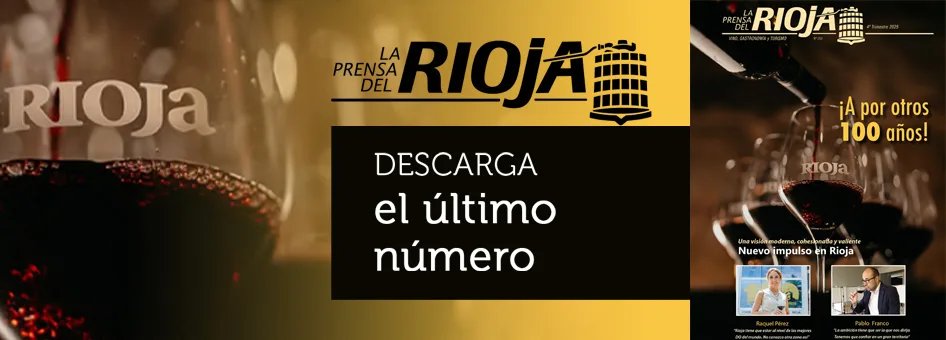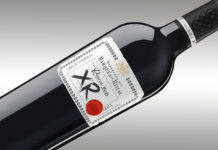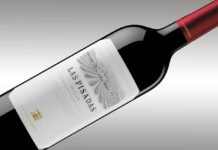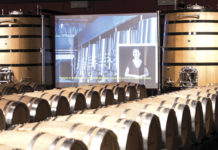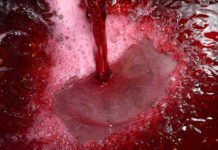The ageing period of wines is the only criterion currently laid down for the official classification of Rioja wines in four different categories: guarantee of origin, Crianza, Reserva and Gran Reserva. This April marks the fortieth anniversary of the Rioja Control Board’s creation of the first back label, or guarantee that the wine in the bottle has been aged in oak barrels. Although Rioja was a pioneer in the control and certification of wine ageing, the last 40 years is actually quite short if we bear in mind the age-old tradition of barrel ageing and the fact that the Control Board has been in existence since 1925. In fact, it was not until the early 1970s that it became mandatory to use a serial-numbered back label issued by the Control Board on each and every bottle produced by a Rioja winery.
Text: Javier Pascual
The first Regulation in 1928 described the characteristics of the guarantee seal as follows: “A rectangle of thin paper measuring 3 by 4 centimetres, whose front side should have a space half a centimetre wide on the upper edge of the longest side to inscribe the corresponding number; there should be a similar space on the lower edge bearing the phrase “Rioja Wine”; on the left-hand edge, and running parallel to it, the name “Brand” should appear, and on the right-hand edge, the word “Guarantee”; in the centre of the seal, using up all the free space, there should be an allegory appropriate to its purpose, which the Control Board will determine, the seals being printed for the time being in a single ink colour with an adhesive on the reverse side.” There are still some examples of this early back label, but I have never been able to find a bottle with one intact.
On the bottles from the 1950s and 1960s you start seeing back labels with the stamp of the Control Board and a map of La Rioja, as on 31 July 1954 it was agreed to affix these back labels on a voluntary basis on wines bottled at source. The wineries therefore used them discretionally until, in October 1972, the plenary session of the Control Board decided to make it mandatory to use serial-numbered back labels, establishing 1 January 1974 as the deadline for its enforcement.
Meanwhile, the Rioja Designation Regulations of 1970 distinguished Crianza wines for the first time, establishing the requirement of a minimum of one year in oak barrels. As a result, in April 1974 the Control Board started issuing a specific model for the back label to differentiate bottles containing Crianza wines.
The amended Regulations in 1976 kept the same definition and requirements for Crianza wines and added a further point for the Reserva and Gran Reserva categories, whose characteristics and requirements had to be put forward to the INDO (National Institute of Designations of Origin) by the Control Board for approval. This ruling, which regulated the use of indications relating to the quality, age and ageing period of wines, first appeared in August 1979 and the Control Board immediately started issuing the corresponding back labels, establishing at that time the four different categories which have barely changed at all in terms of the requirements for ageing in oak barrels for each category. Shortly afterwards, the date of the vintage also became a mandatory feature of the back label (1980 being the first vintage to be identified on the back label).
An excellent marketing tool
The classification of wines in accordance with the ageing time in oak barrels has proved to be an excellent marketing tool for the DOCa Rioja. It has helped to establish an image in consumers’ minds of a region that specialises in barrel-aged wines and has given a huge boost to the positioning of Rioja wines in the added-value segments of the market. This positioning reached a historic landmark in 1993 with the strategic decision to market all of Rioja’s output in bottles, banning bulk sales completely.
With the benefit of hindsight, there is no question that this system of classifying wines according to their ageing period has had a huge impact on the sales of Rioja wines, which experienced a spectacular qualitative and quantitative turnaround in the 1980s that was consolidated in the first decade of the 21st century with its incursion into export markets. This is a practice that has been imitated by other Spanish winemaking regions but is not used in most of the other wine producing regions around the world, where the vintage tends to be the only indication of wine age. In view of the evolution that has taken place over the last forty years in terms of demand from consumers and winemaking styles, I believe that this could be a good time for the classification model of Rioja wines to evolve as well. It is a question of analysing and weighing up the advantages and disadvantages, because nothing is written in stone.
Something else that has contributed to Rioja’s success has been the reliability of the controls carried out by the Control Board to certify the wines marketed under each of the four ageing categories, a control which is reflected in the back label or ‘guarantee document’ that every bottle of Rioja released on the market must carry. The image of reliability and rigour that the Control Board has always transmitted has contributed to the tremendous credibility that the Rioja guarantee system currently enjoys among consumers. For this reason, it seems ludicrous that the draft of the new Agricultural Quality Law being drawn up by the Ministry of Agriculture is contemplating the possibility of changing this control system by decree with absolutely no guarantee that what they are proposing will prove any better than what has been achieved thus far.

To be a winery that produces aged wines, it is necessary to have a minimum of 50 oak barrels of 225 litres and 22,500 litres of wine in stock. Traditionally, the rules in Rioja for ageing wines demand stricter conditions than the general regulations with regard to both the maximum capacity of the barrels and the time the wine should remain in them. Control of the ageing time, which gives the right to use a particular back label, is tracked by records containing all the movements made by the wine of each vintage within the winery until it is released on the market (from tanks to barrels to bottles to labelling and packaging); these records are sent every month to the Control Board for processing which provides exhaustive information on the situation of every winery, its stocks and the sales of different types and categories of wines, as well as the situation of the Designation as a whole, thanks to the compilation of different statistics.






